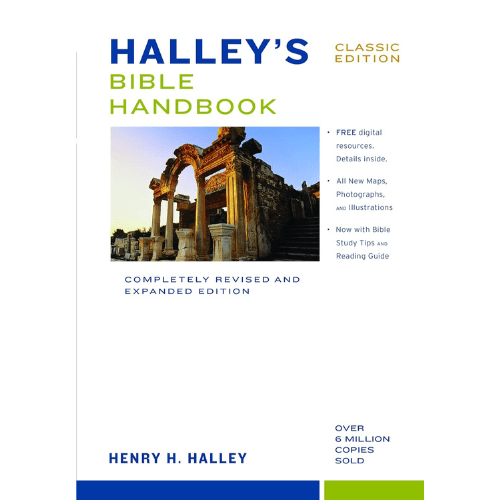Our Hope in the New Heaven and New Earth
Have you ever wondered what life will be like when everything broken is finally made whole again? Deep within each of us is a longing for renewal — a hope that pain, sorrow, and death will not have the final word. Thankfully, the Bible promises that God is preparing something far greater than we can imagine: a new heaven and new earth.
In Revelation 21:1-4, we catch a breathtaking glimpse of that promise. John writes of a world where the old has passed away, where there is no more mourning, crying, or pain. Most importantly, he tells us that God Himself will dwell with His people forever. What a glorious hope we share!
Parables: The Mysteries of God’s Kingdom Revealed Through the Stories Jesus Told by John MacArthur
Yet, as we study the new heaven and new earth, we discover that faithful believers sometimes see this promise through different lenses. Some look forward to a literal, physical recreation of the universe. Others see the fulfillment as a present spiritual reality, already unfolding through the new covenant in Christ.
In this study, we will walk through what the Bible says about the new heaven and new earth. Then, we will explore how two major eschatological views — the Dispensational and the Partial Preterist — understand this beautiful promise.
Together, let’s lean into God’s Word and uncover the hope that anchors our souls today and prepares us for the glory that awaits!
What the Bible Says: Revelation 21:1-4 Explained
Before we dive into different viewpoints, we must first anchor ourselves in Scripture. Revelation 21:1-4 paints a powerful picture of what God has promised.
“Then I saw a new heaven and a new earth, for the first heaven and the first earth had passed away, and the sea was no more.
And I saw the holy city, new Jerusalem, coming down out of heaven from God, prepared as a bride adorned for her husband.
And I heard a loud voice from the throne saying, ‘Behold, the dwelling place of God is with man. He will dwell with them, and they will be his people, and God himself will be with them as their God.
He will wipe away every tear from their eyes, and death shall be no more, neither shall there be mourning, nor crying, nor pain anymore, for the former things have passed away.'” (Revelation 21:1-4, ESV)
This beautiful passage introduces us to the breathtaking reality of the new heaven and new earth. Let’s explore some key observations.
Fulfillment of God’s Promise
The phrase new heaven and new earth echoes back to Isaiah 65:17, where God promised to create a new reality for His people. This isn’t just a repair of the old world. It is a profound transformation — a complete renewal filled with righteousness, peace, and joy.
No More Sea: Chaos and Separation Removed
John also notes, “the sea was no more.” In ancient thought, the sea often symbolized chaos, danger, and separation. By removing the sea, God removes all that divides and threatens His people. This signals the arrival of perfect peace and unity with Him.
God Dwelling with Man: The Climax of Redemption
The most stunning promise is that God will dwell with us. No longer will there be distance or separation. He will wipe away every tear, erase death, and heal every wound. This is the heart of our hope — a forever life with our Creator and Redeemer!
Key Terms to Know
New (Greek kainos): This word means new in nature or quality, not just new in time. It points to a better, transformed reality, not merely a replacement.
Tabernacle/Dwelling (Greek skēnē): This word refers to a tent or tabernacle. It reminds us of God’s presence among His people in the wilderness. Here, it shows that His presence will be permanent and unbroken forever.
As we continue, we will see how the promise of a new heaven and new earth shines through different eschatological lenses — yet always points us back to God’s unshakable faithfulness.
Dispensational View: A Future Physical Renewal
In this view, the new heaven and new earth will come after the Millennium — a literal 1,000-year reign of Christ on earth. After this period, God will completely recreate the heavens and the earth, not just cleanse or restore them. This marks a final and distinct act of renewal.
Key Points of the Dispensational Perspective
First, dispensationalists maintain a clear separation between Israel and the Church, even into the eternal state. Each group fulfills different parts of God’s promises.
Second, they see both an earthly Jerusalem and a Heavenly Jerusalem operating distinctly. Earthly Jerusalem will continue to have significance, while the New Jerusalem will descend from heaven as described in Revelation 21.
Finally, believers will inhabit a perfected physical world. We will live in glorified, resurrected bodies on a new earth that is free from sin, death, and decay. What a hope that brings!
Scripture Emphasis
Dispensationalists stress the “plain sense” interpretation of prophecy. They believe Scripture should be understood as straightforwardly as possible unless there is a clear reason not to.
Importantly, they view Revelation 20 and 21 as a literal sequence. First comes Christ’s 1,000-year reign, followed by the final judgment, and then the new heaven and new earth. This reading keeps the events in a clear chronological order without blending or spiritualizing them.
Application Reflection: Looking Forward to Complete Renewal
As we reflect on the dispensational view, we are reminded of the joy of future physical transformation. This view encourages us to look ahead with eager hope, knowing that one day we will walk on a renewed earth under a renewed heaven.
The promise of the new heaven and new earth reminds us that God’s redemption is total — not just spiritual, but physical too. Because of this, we can press on today, knowing that the best is truly yet to come!
Partial Preterist View: Fulfillment and Present Reality
When we turn to the Partial Preterist view, we find a very different approach to the new heaven and new earth. Instead of looking far into the future, this view sees God’s promises already being fulfilled among us.
Summary of Beliefs
Partial Preterists believe much of Revelation was fulfilled during the first century, particularly through the fall of Jerusalem in A.D. 70. They see the new heaven and new earth as the arrival of the New Covenant order. In this understanding, God’s redemptive plan has already been launched and continues growing.
Key Points of the Partial Preterist Perspective
First, the “passing away” of the old heaven and earth represents the end of the Mosaic Covenant. It marks the closing of the old age of Israel’s temple-centered worship.
Second, the New Jerusalem symbolizes the Church — God’s people now living in a restored relationship with Him. Instead of waiting for a distant city, we already belong to the heavenly city by faith.
Finally, this view focuses on spiritual renewal rather than cosmological destruction. God is not scrapping the universe; He is redeeming and transforming His creation from within.
Scripture Emphasis
Partial Preterists often draw from 2 Peter 3:13, which speaks of a “new heavens and a new earth in which righteousness dwells.” They also highlight Hebrews 12:22-24, where believers are said to have already “come to Mount Zion and to the city of the living God.“
Because of this, they focus more on covenant language — new relationships, new promises, and a new way of life — instead of the idea of the planet being destroyed and rebuilt.
Application Reflection: Living Boldly in the New Creation
This view encourages us to live boldly right now. We are already part of the new heaven and new earth as members of Christ’s body.
Because God’s dwelling is already among us, we can walk confidently in His presence every day. We do not have to wait for some distant future to experience His nearness. Each act of love, justice, and faithfulness shows that the kingdom of God is real and active even now.
Key Differences Between Dispensational & Partial Preterist Views
As we have seen, both views deeply treasure the promise of a new heaven and new earth. However, they approach the details very differently. Let’s look at the key differences side by side.
Comparison Chart
| Aspect | Dispensational View | Partial Preterist View |
|---|---|---|
| Timing of Fulfillment | Future, after the Millennium | Already inaugurated in the first century |
| Nature of Fulfillment | Physical recreation of universe | Spiritual renewal through New Covenant |
| View of the Church & Israel | Distinct roles for eternity | United as one people of God |
| Emphasis | Future physical hope | Present spiritual reality |
Understanding the Differences
Dispensationalists look forward to a future, physical new heaven and new earth after Christ’s millennial reign. Partial Preterists believe the new creation has already begun through Christ’s first coming and the New Covenant. At the same time, Dispensationalists continue to see a separation between Israel and the Church. In contrast, Partial Preterists see all believers united as one covenant family under Christ. Both views emphasize hope, but one points mainly to future transformation, while the other encourages bold living in the present.
Unified by God’s Unbreakable Promise
While these differences matter, we must remember something even greater. Both views affirm God’s unbreakable promise: He is making all things new.
The new heaven and new earth will display His glory, His faithfulness, and His everlasting love — no matter the timing!
Halley’s Bible Handbook, Classic Edition
The bestselling Bible handbook of all time with millions of copies sold, the Halley’s Bible Handbook makes the Bible’s wisdom and message accessible to everyone.
Why the New Heaven and New Earth Matters for Us Today
The promise of a new heaven and new earth isn’t just a distant dream. It shapes how we live every single day. No matter how we interpret the timing, God’s promise gives us real hope right now. We can face trials with courage because we know a perfect world is coming.
At the same time, we are called to faithfulness in the present. God invites us to live as citizens of His kingdom today, even as we await its fullness. Every act of kindness, forgiveness, and love reflects His new creation at work within us. Most importantly, the new heaven and new earth remind us that God’s ultimate victory is certain. He will dwell with us forever. Death, sorrow, and pain will not have the final word.
Because of this unshakable promise, we can walk with joy, serve with passion, and trust Him completely — both now and forever!
Final Thoughts: Longing for God’s Completed Work
Whether we await a future physical renewal or live under the New Covenant reality, the hope of the new heaven and new earth anchors our souls. No matter the view we hold, the beauty of Revelation 21:1-4 invites us to trust completely in God’s final victory. He will wipe away every tear. He will remove all sorrow, pain, and death forever.
Until that day, we are called to keep seeking God’s presence daily. We are citizens of His kingdom even now, living out the realities of the new heaven and new earth in how we love, serve, and worship. Because God’s promises are sure, we can press on with joy, boldness, and unwavering hope. Let us keep our eyes on Him — the One who makes all things new!
Frequently Asked Questions (FAQ) New Heaven and New Earth
1. What does “new heaven and new earth” mean in Revelation 21:1-4? It describes God’s complete renewal of creation. It’s a world without sorrow, death, or separation — a place where God dwells with us forever.
2. How is the dispensational view different from the partial preterist view? Dispensationalists see the new heaven and new earth as a future physical renewal. Partial Preterists believe it began with Christ’s New Covenant.
3. Will the new heaven and new earth be a completely different world? Dispensationalists say yes, a literal new creation. Partial Preterists see it more as a renewed relationship with God through Christ.
4. Why does the “no more sea” part matter? In biblical imagery, the sea often symbolized chaos and separation. Its removal shows perfect peace, unity, and safety with God.
5. How should we live now in light of the new heaven and new earth? We should live with hope, faithfulness, and boldness. God’s victory is sure, and His presence is already with us today!




